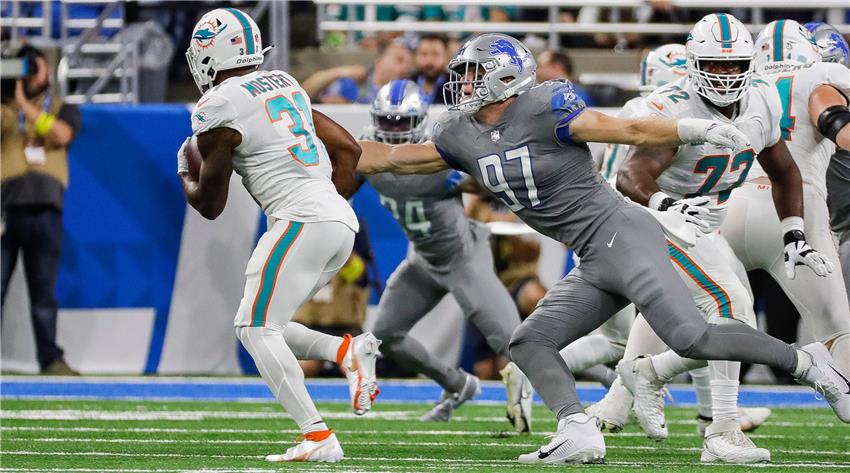
Consequences of Rule Changes in the NFL
We Investigate how the game plan is affected by recent rule changes in the NFL and what they do for player safety.
We Investigate how the game plan is affected by recent rule changes in the NFL and what they do for player safety. Like MelBet, which mixes dynamic odds to enhance the betting experience, these modifications are meant to make the game more lively while protecting players from severe injuries. Having knowledge about these changes helps fans and analysts understand where the sport is heading.
A Brief Look at Recent NFL Rule Changes
The National Football League has implemented several rule changes that aim at enhancing safety and gameplay. They include:
- Helmet rule: A player will be penalized for initiating contact with his head by lowering it.
- Kickoff rule: New kickoff rules that reduce high-speed collisions have been introduced.
- Overtime rule: Changes were made to ensure both teams got opportunities for possession.
- Pass interference review: Coaches can challenge pass interference calls.
- Blindside block rule: Blocks where the player’s head is outside the line of his body are prohibited.
These changes seek to lower injuries, promote fairness among teams as well as increase excitement levels among fans watching games live or on TV. This means every alteration deals with a particular aspect either related to safety or fairness in terms of competition, thus showing care for participants’ welfare by this league.
Strategic Aspects
Team strategies have been greatly affected by these changes in rules. Offensively speaking, agility and speed have been put under greater consideration because now squads are more careful when it comes to blocking techniques so as not to get penalties imposed on them. Coaches have also adjusted their playbooks by incorporating faster passes together with more imaginative formations that could minimize chances of getting helmet-to-helmet contacts during matches.
On defense, players had to change their tackle technique due to the new helmet rule, thereby making it necessary for them to focus on safer ways of making tackles that are still effective. Therefore, this has led to increased emphasis on planning strategically regarding areas such as defensive positioning plus using zones while covering receivers downfield. In general, these adjustments have encouraged teams to come up with new ideas, thereby improving the tactical breadth of this game and keeping players’ safety in mind.
Safety Improvements
In a bid to reduce the risk of injury and create a safer atmosphere for players, the NFL has implemented several rule changes. These adjustments were made with two goals in mind: safeguarding athletes and preserving the game’s integrity while also encouraging fairness among competitors.
Fewer Concussions
A decline in the number of concussions has been brought about by new measures. The NFL said there was a 24% decrease in the number of concussions recorded during the 2018 season compared to the previous year. One critical factor that led to this decrease is enhanced medical protocols which involve immediate on-field assessments and stricter return-to-play guidelines, thus contributing to better player health.
These rules also call for safer tackling techniques and limit high-impact plays so that head injuries are minimized. Such efforts show how much importance is attached to safety within NFL circles while at the same time safeguarding its athletes.
Enforcement Challenges
For the enforcers, there are many problems in ensuring that these new rules of safety are adhered to. This means that they have to make immediate choices in applying the helmet rule and other safety measures, which are normally criticized by players, coaches, and fans alike as they require split-second judgments. A game outcome can be influenced by a single controversial call, thereby sparking debates on how fair or consistent rule enforcement is.
Furthermore, being a very high-speed event, it becomes hard for the referees to see all wrongs committed, sometimes resulting in the omission of some offenses. This task is complicated because it requires officials to ensure players’ safety while at the same time maintaining the continuous flow of the game, thus indicating that they need more training and backing.
Player and Coach Adaptations
To adhere to the new regulations of the NFL, players and coaches have had to make some big changes. These changes consist of:
- Training methods: One thing coaches do is teach how to tackle safely so that the risks of penalties or injuries are reduced.
- Alterations in playbooks: Another change teams make is modifying their offensive and defensive playbooks around these updated rules, which means they will be adding more safety-first type plays into them.
- Equipment advances: Players are now using better protective equipment that reduces the chances of injury since there is an increased focus on safety this year.
- In-game adjustments: Coaches have been able to adapt quickly to what they do during games according to new guidelines, while players must follow suit.
The above-mentioned alterations show just how flexible and creative this league can be as teams try to stay competitive without compromising on the safety standards set forth by the NFL.
Fan and Media Reception
The NFL rule changes have been met with mixed reactions from fans and the media. Many supporters appreciate the greater emphasis on player safety, which they see as part of wider attempts by the league to reduce injuries while improving the quality of games. Such people also commend the NFL’s transparency and the measures taken even before anything happens.
However, some fans, together with analysts, express frustration at frequent penalties, which disrupt the flow of games. These individuals argue that sometimes new rules may slow down a match or result in controversial calls being made by referees. Still, overall feelings lean towards optimism, where most people agree that long-run advantages outweigh short-term inconveniences if any were experienced.
Final Words
Rules recently instituted by the NFL significantly change gameplay, strategy, and overall safety. By making health a priority for players while making adjustments in tactics used during games played, this organization continues growing itself by mixing tradition with innovation. These transformations demonstrate commitment towards improvement, maybe not only for this sport but also ensuring excitement remains there throughout all levels involved in it.
